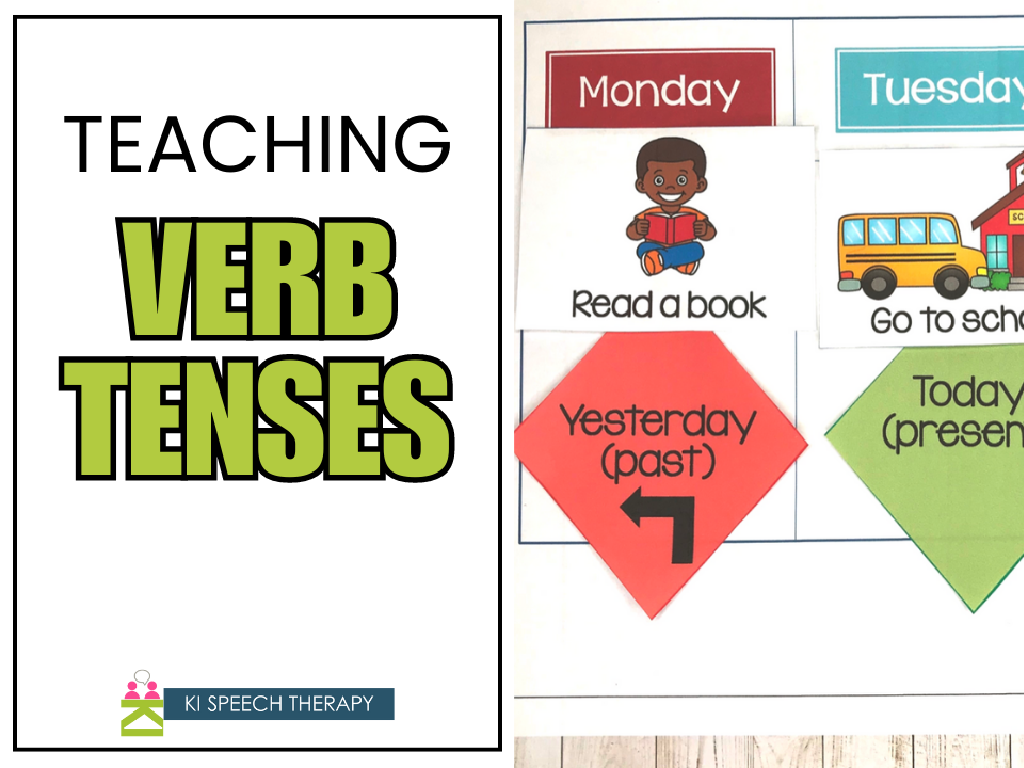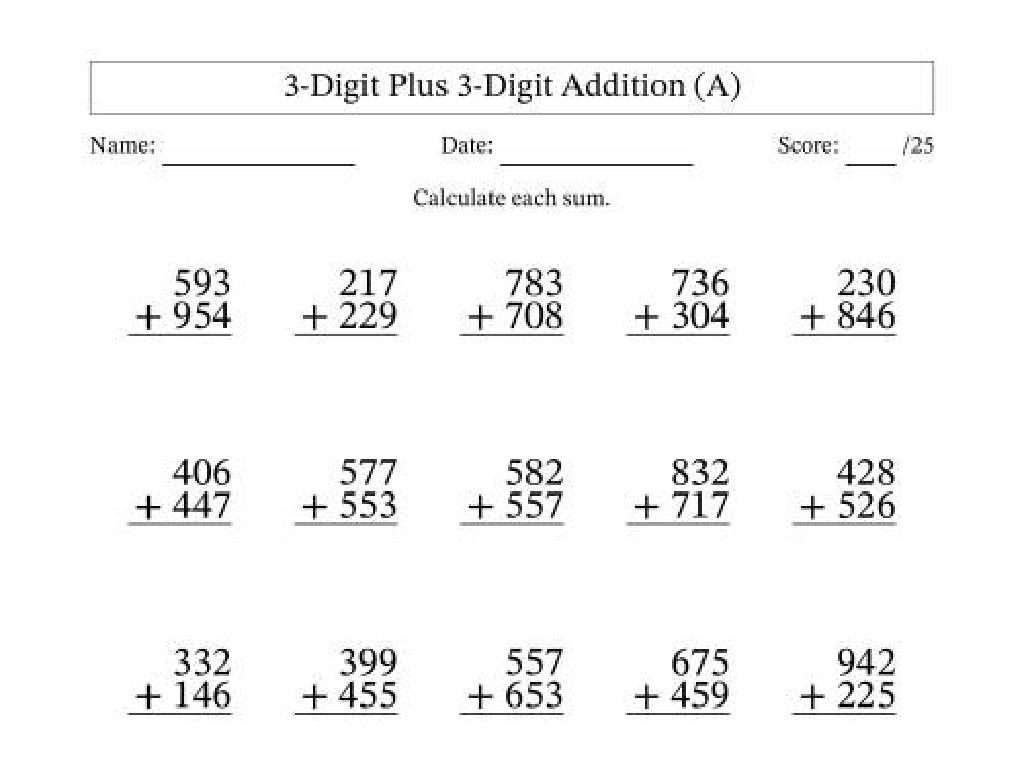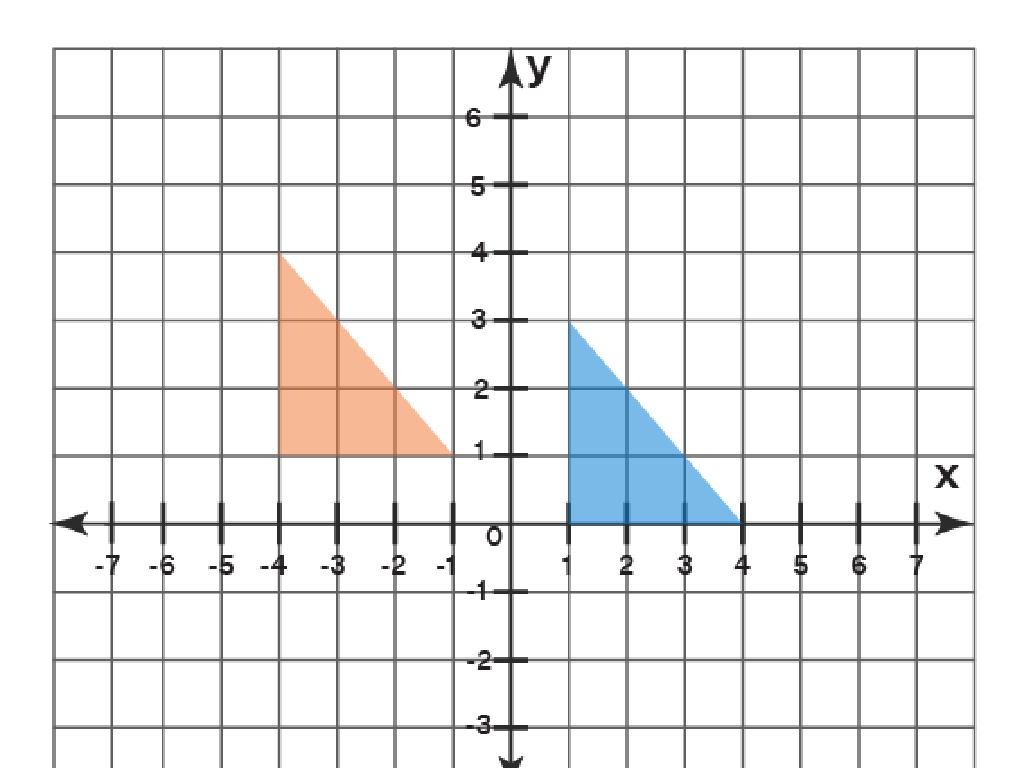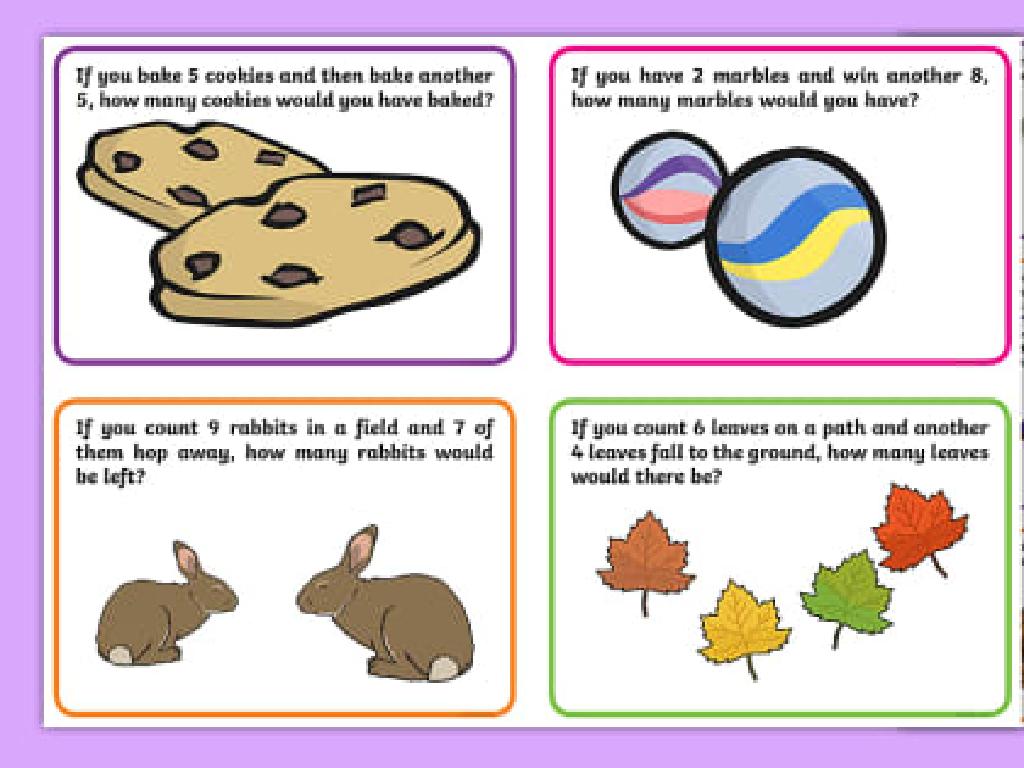Identify And Select Countries Of Africa: Region 2
Subject: Social studies
Grade: Seventh grade
Topic: Africa: Geography
Please LOG IN to download the presentation. Access is available to registered users only.
View More Content
Exploring Africa: Region 2
– Africa’s diverse geography
– Second largest continent with varied landscapes and climates
– Africa’s regional divisions
– Africa is split into regions for easier study and understanding
– Countries in Region 2
– Learn the names and locations of countries like Angola, Zambia, and Malawi
– Significance of Region 2
– Region 2’s cultural and ecological diversity
|
This slide introduces students to the vast and diverse continent of Africa, focusing on the concept of dividing the continent into regions for a more manageable study. Region 2 includes countries in the southern part of Africa. It’s important to highlight the significance of this region, which may include unique cultural practices, significant wildlife, and ecological systems. Encourage students to use maps to locate each country and to research one fact about each country to share in the next class. This activity will help them remember the countries and appreciate the diversity within a single African region.
Exploring Africa: Region 2
– Africa’s regional division
– Africa is often divided into regions for easier study; Region 2 includes East Africa.
– Region 2’s diverse climate
– From arid deserts to tropical rainforests, Region 2’s climate varies greatly.
– Region 2’s varied landscape
– Features savannas, mountain ranges, and beautiful coastlines.
– Cultural highlights of Region 2
– Rich in traditions, languages, and history, with famous music and art.
|
This slide introduces students to the concept of dividing Africa into regions for a more focused study, with a spotlight on Region 2. It’s important to discuss the geographical diversity of Africa and how it influences the climate, landscape, and cultures within each region. Region 2, often considered as East Africa, includes countries like Kenya, Tanzania, and Uganda, among others. Emphasize the varied climates from dry savannas to lush rainforests, the landscapes ranging from the Great Rift Valley to idyllic beaches, and the rich cultural tapestry including Maasai warriors, Swahili language, and vibrant markets. Encourage students to research and list the countries in Region 2 as part of their homework to deepen their understanding of the region’s geography.
Exploring Africa: Countries of Region 2
– Introduction to Region 2 countries
– Learn about countries like Zambia, Zimbabwe, and Malawi, their flags, and capitals.
– Historical snippets and facts
– Discover key historical events and unique aspects of each country.
– Geographical significance
– Understand how location impacts economy, climate, and culture.
– Cultural highlights
– Explore languages, festivals, and traditions that make these countries unique.
|
This slide aims to provide students with an overview of the countries in Africa’s Region 2. Start by introducing each country with visual aids such as flags and maps to locate capitals. Provide a brief history of each country, highlighting significant events that shaped them. Discuss the importance of geographical location, touching on aspects like trade routes, natural resources, and climate. Finally, delve into the rich cultural heritage, discussing languages, festivals, and traditions. Encourage students to think about how geography and history influence culture and daily life. This will help students appreciate the diversity and significance of each country within the African continent.
Exploring Africa: Region 2 Geography
– Locate Region 2 countries on a map
– Use a map to find countries like Angola, Zambia, and Malawi
– Major geographical features in Region 2
– Mountains, rivers, and savannas define the landscape
– Geography’s impact on culture
– Cultural practices often align with the environment
– Daily life shaped by geography
– Access to resources affects food, housing, and jobs
|
This slide aims to help students identify and understand the countries within Africa’s Region 2, which includes nations such as Angola, Zambia, and Malawi. Highlight the major geographical features like the Zambezi River and the Great Rift Valley, and discuss how these features influence the culture of the people living there. For example, the availability of water from rivers can lead to farming practices that shape the local cuisine. Encourage students to think about how geography can affect their own lives, such as the types of food they eat or the kinds of homes they live in. This will help them relate to the material and understand the importance of geography in shaping cultures and daily activities.
Cultural Exploration of Africa: Region 2
– Languages of Region 2
– Investigate the diversity of languages like Swahili, Amharic, and Somali.
– Traditional clothing and art
– Explore attire like the Maasai shuka and the art of scarification.
– Region 2’s unique festivals
– Learn about Timkat in Ethiopia or the Mombasa Carnival.
– Celebrations and their significance
– Understand the cultural importance of ceremonies and communal gatherings.
|
This slide aims to immerse students in the rich cultural tapestry of Africa’s Region 2. Begin by discussing the variety of languages spoken, highlighting how language reflects the history and interactions of different groups. Move on to traditional clothing and art, showing images or artifacts if possible, to give a tangible sense of the culture. Discuss festivals such as Timkat, which marks Epiphany in Ethiopia, or the Mombasa Carnival in Kenya, which celebrates the country’s cultural diversity. Emphasize the significance of these celebrations in strengthening community bonds and preserving traditions. Encourage students to research more about the region’s culture and possibly share any personal or familial connections to the region.
Economic Activities in Africa: Region 2
– Agriculture’s role in Region 2
– Farming is a key livelihood; crops include coffee, tea, and cocoa.
– Trade and industry significance
– Trade routes and markets; industries like textiles and mining.
– Natural resources’ economic impact
– Resources like diamonds, gold, and oil drive growth but can lead to inequality.
– Case study: Country’s economy
– Examining how one country utilizes its resources and the effects on its citizens.
|
This slide aims to give students an overview of the economic activities in Africa’s Region 2. Emphasize the importance of agriculture as a backbone for many countries, with cash crops being significant for export. Discuss the role of trade and industry, highlighting how historical trade routes have shaped modern economies and the development of industries such as textiles and mining. Address the double-edged sword of natural resources, which can lead to economic booms but also challenges like resource curses. Finally, use a case study of a specific country to illustrate these concepts in a tangible way, showing students the real-world application of economic principles. Encourage students to think critically about how these factors interplay to shape the region’s economic landscape.
Environmental Challenges in Africa: Region 2
– Major environmental concerns
– Issues like deforestation, desertification, and water scarcity
– Impact on countries and people
– Affects agriculture, health, and economies
– Mitigation and addressing efforts
– Initiatives like reforestation, conservation, and sustainable practices
|
This slide aims to educate students on the environmental issues that affect Region 2 of Africa, which includes countries such as Sudan, South Sudan, Eritrea, and Djibouti. Highlight the major concerns such as deforestation, which leads to habitat loss and desertification; water scarcity, which impacts daily life and agriculture; and the overarching effects of climate change. Discuss how these challenges impact the livelihoods of the inhabitants, their health, and the economies of these countries. Emphasize the importance of efforts being made to combat these issues, such as reforestation projects, wildlife conservation, and the adoption of sustainable agricultural practices. Encourage students to think critically about how these efforts can make a difference and the role of international cooperation in addressing environmental challenges.
Class Activity: Mapping Africa’s Region 2
– Label Region 2 countries on a map
– Mark capitals and major features
– Research and note an interesting fact
– Look for unique cultural, historical, or natural aspects
– Share findings with the class
|
This activity is designed to help students engage with the geography of Africa’s Region 2 in an interactive way. Provide each student with a blank map of the region. Instruct them to label each country, its capital city, and to denote significant geographical features such as rivers, mountains, or deserts. Additionally, students should find one interesting fact about each country to share. This could be related to the country’s culture, history, or natural wonders. Encourage students to use credible sources for their research. Possible activities for different students could include focusing on different countries within the region, comparing and contrasting geographical features, or creating a presentation on the interesting facts they’ve gathered. This will help students develop research skills and a deeper understanding of the diversity within Africa’s Region 2.
Reflecting on Africa’s Region 2
– Recap of Region 2 countries
– Diversity in Region 2
– Consider the various cultures, languages, and landscapes.
– Each country’s uniqueness
– Think about the different traditions, foods, and histories.
– Open Q&A session
|
As we conclude our journey through Africa’s Region 2, take a moment to recap the countries we’ve explored. Reflect on the rich tapestry of diversity found within these nations, from the multitude of languages spoken to the variety of cultural practices and natural landscapes. Acknowledge the uniqueness of each country, including their individual histories and contributions to the continent’s overall identity. Finally, open the floor for students to ask questions or start discussions, allowing them to engage with the material and each other, fostering a deeper understanding of the region’s complexity and beauty.






